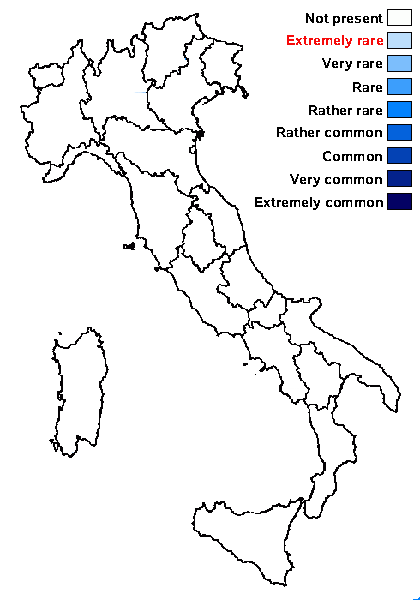Thelidium gisleri (Müll. Arg.) Zahlbr.
Cat. Lich. Univ. 1: 121, 1921.. Basionym: Sagedia gisleri Müll. Arg. - Flora (Regensburg) 60: 478, 1877.
Synonyms: Thelidium gisleri (Müll. Arg) Zahlbr.; Verrucaria gisleri (Müll. Arg.) Stizenb.
Distribution:
Description: Thallus crustose, very thinly episubstratic, white-grey, mostly continuous, poorly delimited. Perithecia black, matt, half-immersed, 0.25-0.3 mm across. Involucrellum reaching down about half the perithecium; hamathecium of periphyses and periphysoids, interascal filaments absent; hymenial gel I+ red (I+ blue at very low concentrations of I), K/I+ blue. Asci 8-spored, ellipsoid to clavate, I-, fissitunicate, the wall thickened above, with an ocular chamber, dehiscent by extrusion of a delicate rostrum. Ascospores 3-septate, hyaline, narrowly ellipsoid, 33-37 x 10-12 μm. Photobiont chlorococcoid. Spot tests: K-, C-, KC-, P-, UV-. Chemistry: without lichen substances.
Note: on calcareous rocks at high elevations; known from a few localities in the Alps outside Italy; to be looked for in the Italian Alps.
Growth form: Crustose
Substrata: rocks
Photobiont: green algae other than Trentepohlia
Reproductive strategy: mainly sexual

Predictive model
Growth form: Crustose
Substrata: rocks
Photobiont: green algae other than Trentepohlia
Reproductive strategy: mainly sexual

Predictive model
 INDEX FUNGORUM
INDEX FUNGORUM
 GBIF
GBIF

